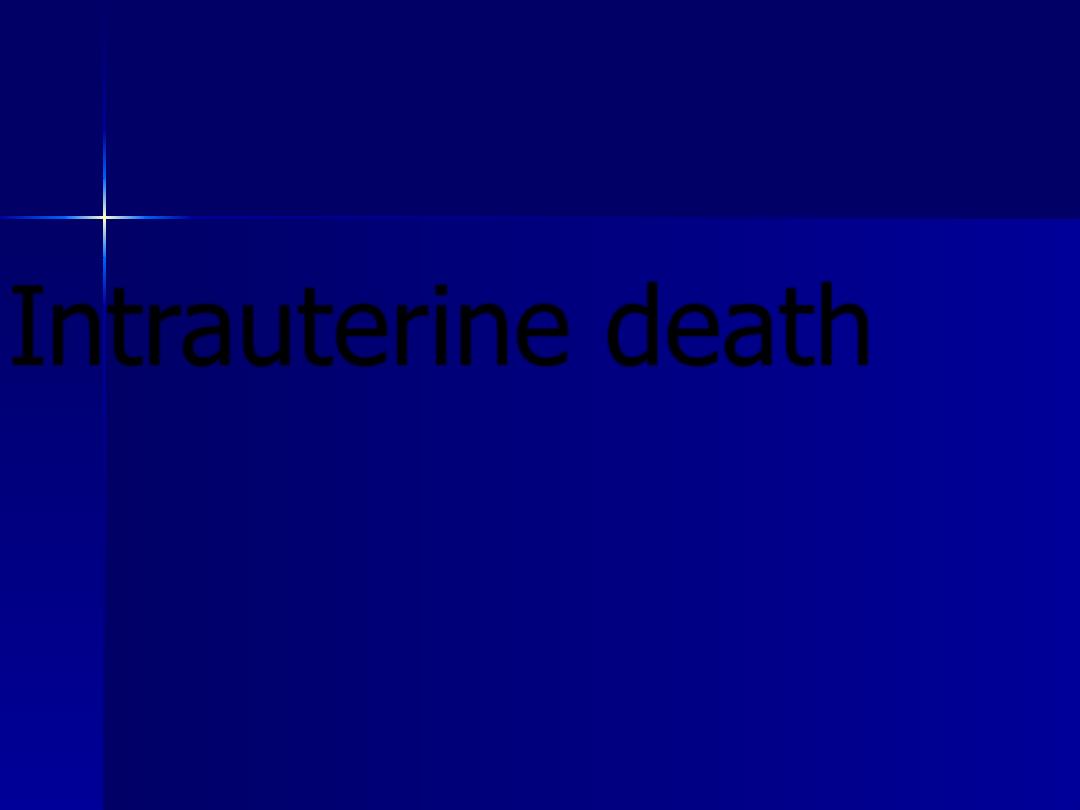
Intrauterine death
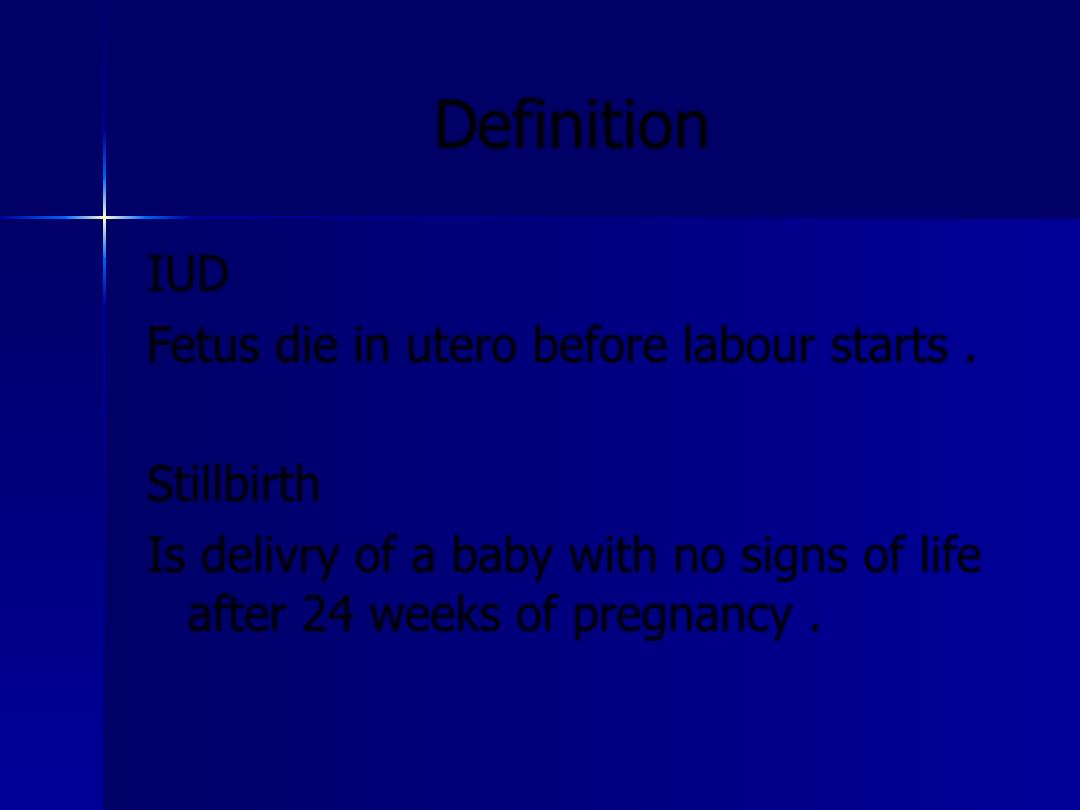
Definition
IUD
Fetus die in utero before labour starts .
Stillbirth
Is delivry of a baby with no signs of life
after 24 weeks of pregnancy .
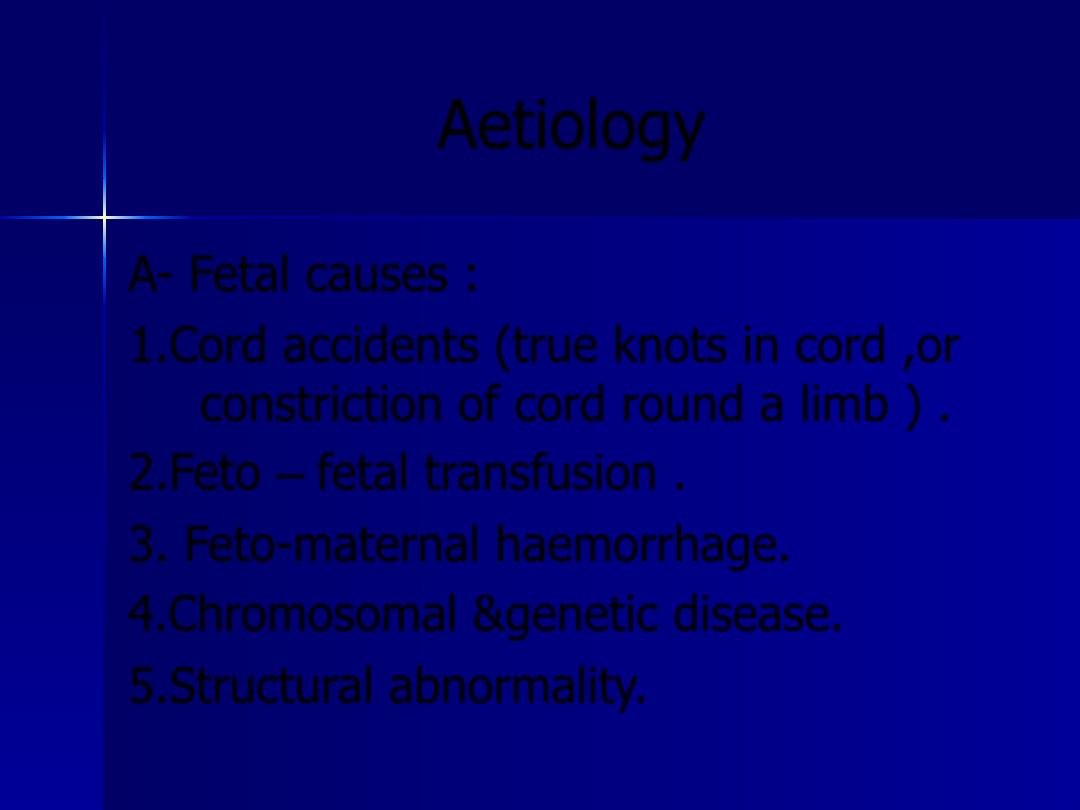
Aetiology
A- Fetal causes :
1.Cord accidents (true knots in cord ,or
constriction of cord round a limb ) .
2.Feto – fetal transfusion .
3. Feto-maternal haemorrhage.
4.Chromosomal &genetic disease.
5.Structural abnormality.
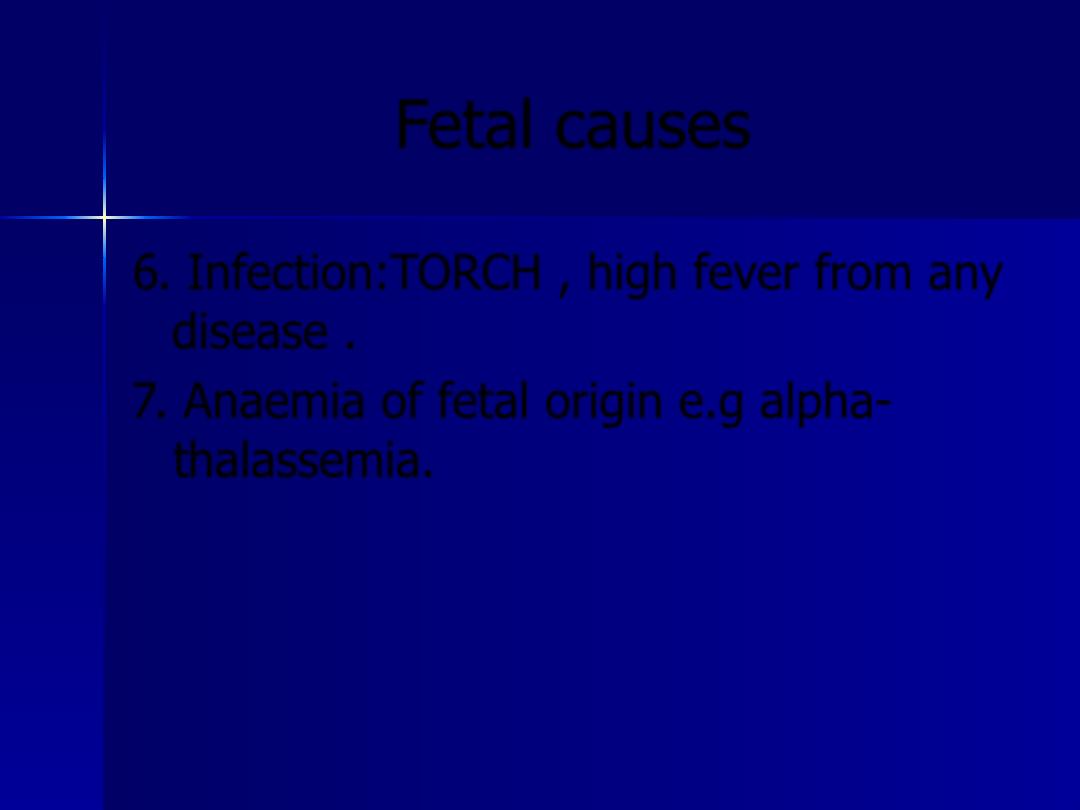
Fetal causes
6. Infection:TORCH , high fever from any
disease .
7. Anaemia of fetal origin e.g alpha-
thalassemia.
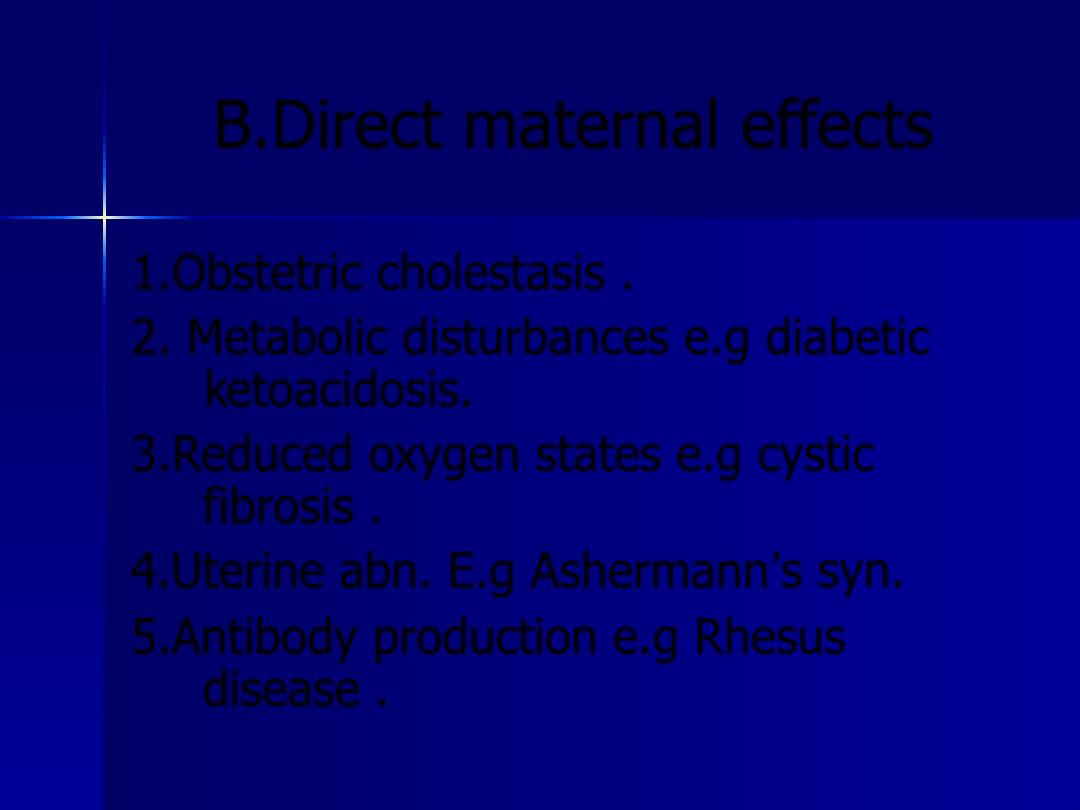
B.Direct maternal effects
1.Obstetric cholestasis .
2. Metabolic disturbances e.g diabetic
ketoacidosis.
3.Reduced oxygen states e.g cystic
fibrosis .
4.Uterine abn. E.g Ashermann’s syn.
5.Antibody production e.g Rhesus
disease .
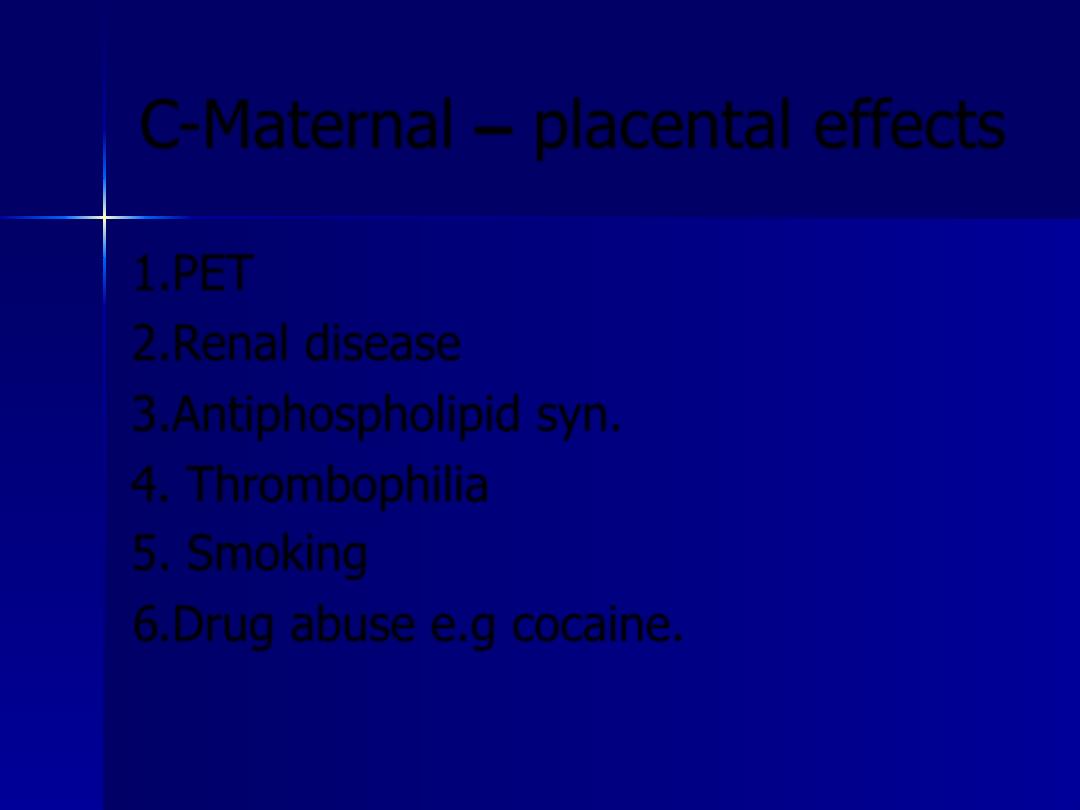
C-Maternal – placental effects
1.PET
2.Renal disease
3.Antiphospholipid syn.
4. Thrombophilia
5. Smoking
6.Drug abuse e.g cocaine.

Symptoms & diagnosis
Decrease fetal moement in as many as
50% of cases .
Breast may diminish in size .
In cases of HT ; BP may sometimes fall.
After 24 weeks ; failure to hear fetal
heart sound with a stethoscope .
Uterus may be found to be smaller than
duration of pregnancy .
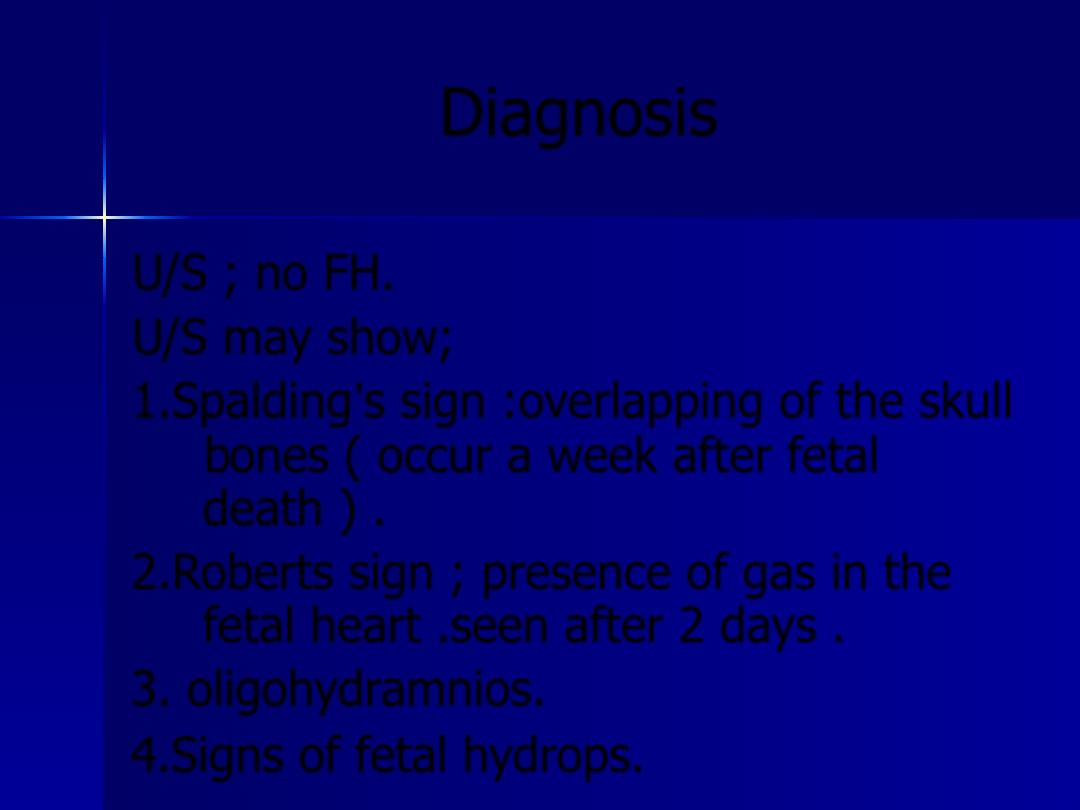
Diagnosis
U/S ; no FH.
U/S may show;
1.Spalding’s sign :overlapping of the skull
bones ( occur a week after fetal
death ) .
2.Roberts sign ; presence of gas in the
fetal heart .seen after 2 days .
3. oligohydramnios.
4.Signs of fetal hydrops.
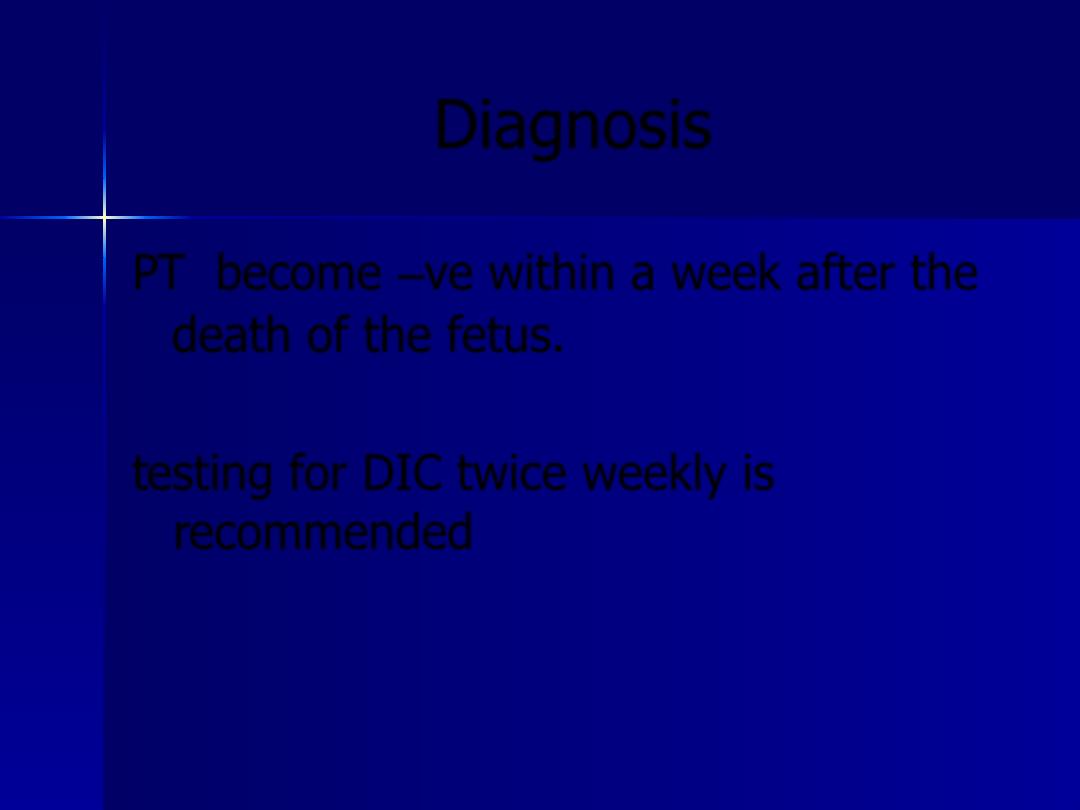
Diagnosis
PT become –ve within a week after the
death of the fetus.
testing for DIC twice weekly is
recommended
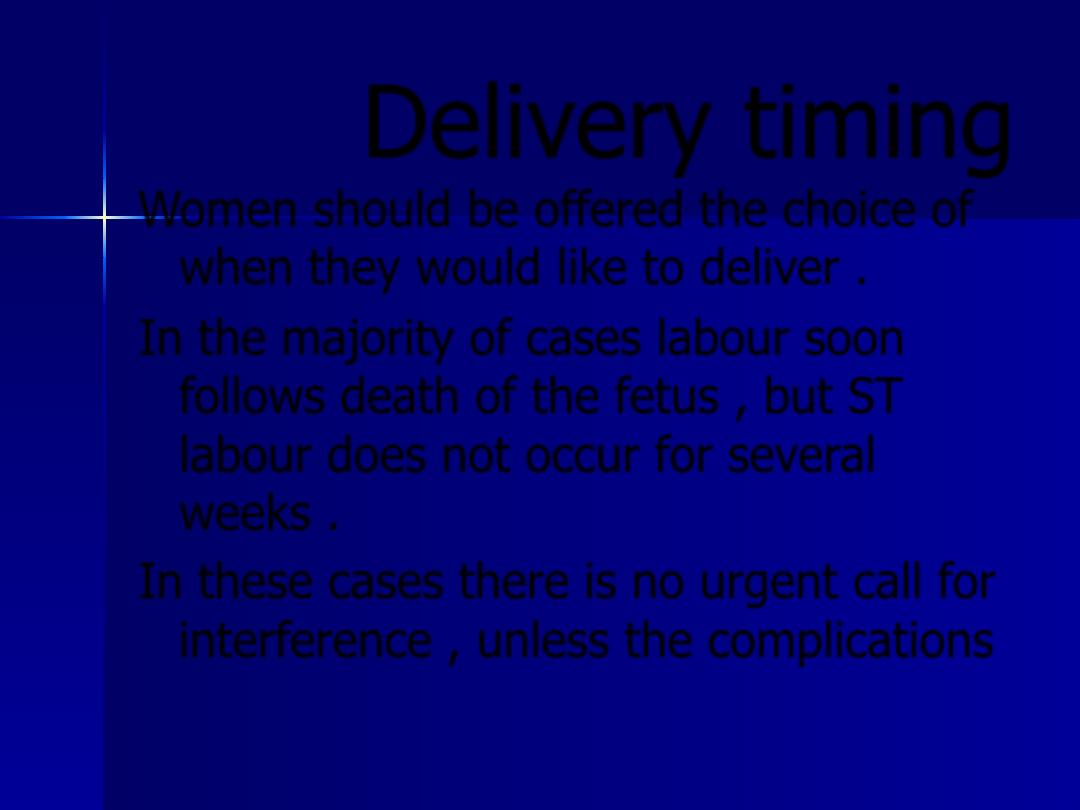
Delivery timing
Women should be offered the choice of
when they would like to deliver .
In the majority of cases labour soon
follows death of the fetus , but ST
labour does not occur for several
weeks .
In these cases there is no urgent call for
interference , unless the complications
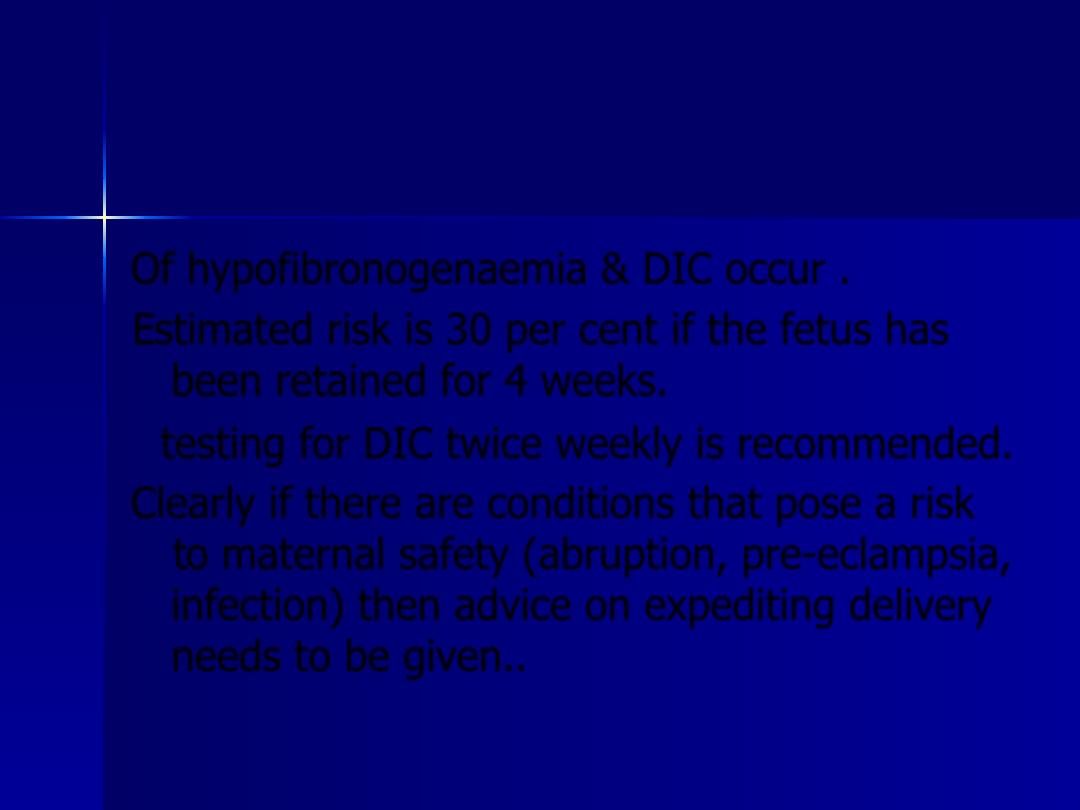
Of hypofibronogenaemia & DIC occur .
Estimated risk is 30 per cent if the fetus has
been retained for 4 weeks.
testing for DIC twice weekly is recommended.
Clearly if there are conditions that pose a risk
to maternal safety (abruption, pre-eclampsia,
infection) then advice on expediting delivery
needs to be given..
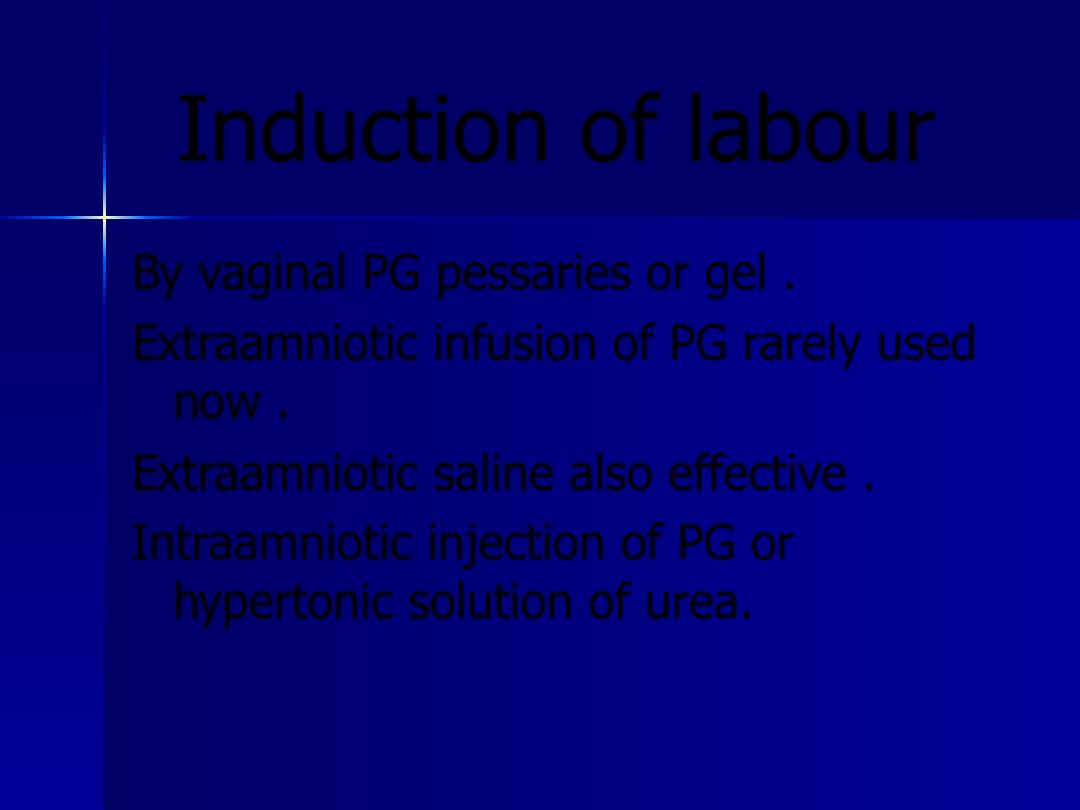
Induction of labour
By vaginal PG pessaries or gel .
Extraamniotic infusion of PG rarely used
now .
Extraamniotic saline also effective .
Intraamniotic injection of PG or
hypertonic solution of urea.
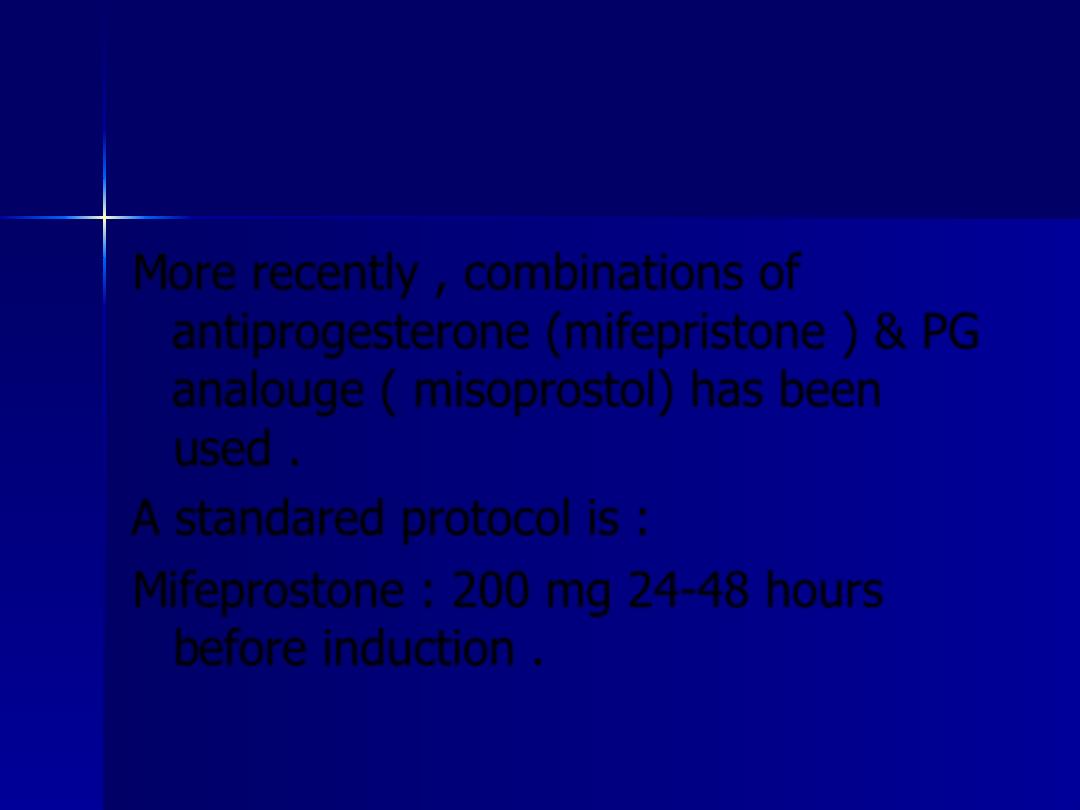
More recently , combinations of
antiprogesterone (mifepristone ) & PG
analouge ( misoprostol) has been
used .
A standared protocol is :
Mifeprostone : 200 mg 24-48 hours
before induction .
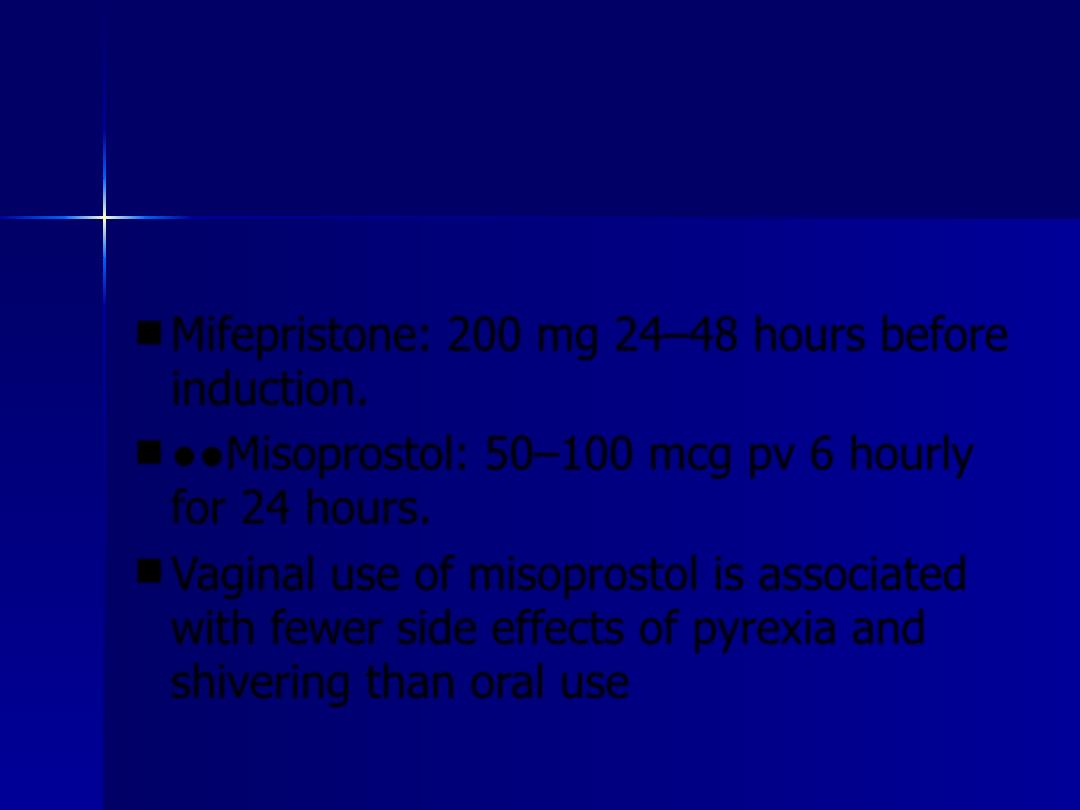
■
Mifepristone: 200 mg 24–48 hours before
induction.
■
●●Misoprostol: 50–100 mcg pv 6 hourly
for 24 hours.
■
Vaginal use of misoprostol is associated
with fewer side effects of pyrexia and
shivering than oral use
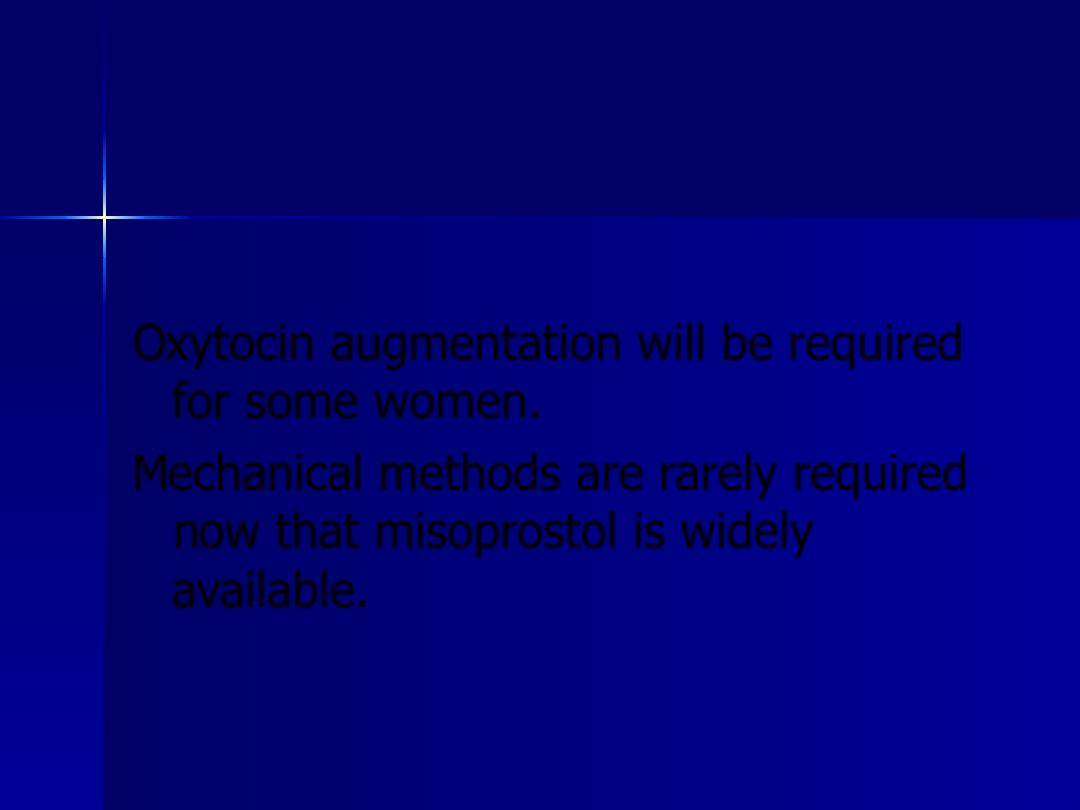
Oxytocin augmentation will be required
for some women.
Mechanical methods are rarely required
now that misoprostol is widely
available.
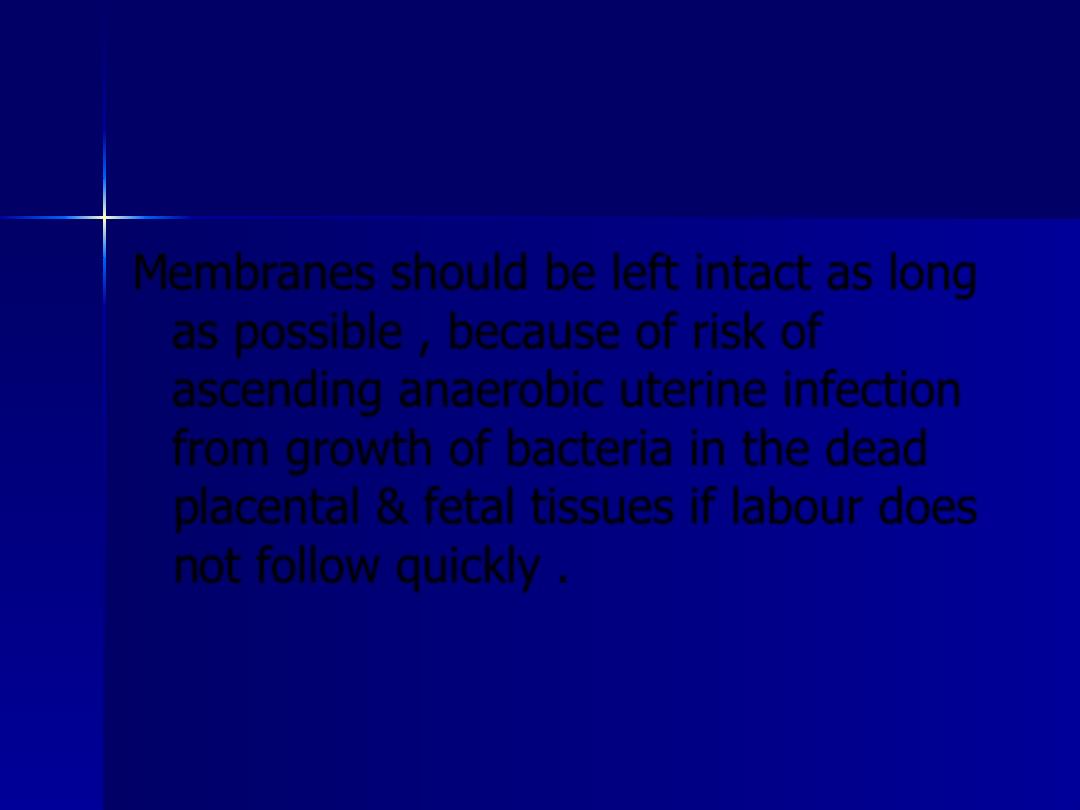
Membranes should be left intact as long
as possible , because of risk of
ascending anaerobic uterine infection
from growth of bacteria in the dead
placental & fetal tissues if labour does
not follow quickly .
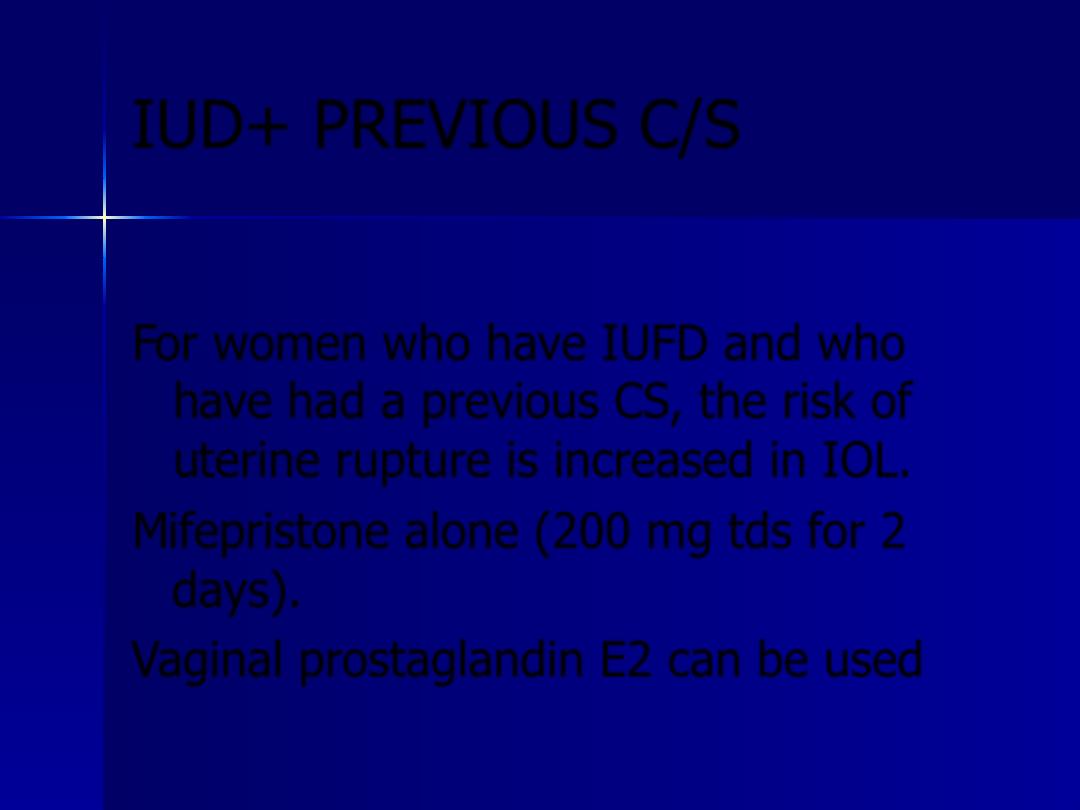
For women who have IUFD and who
have had a previous CS, the risk of
uterine rupture is increased in IOL.
Mifepristone alone (200 mg tds for 2
days).
Vaginal prostaglandin E2 can be used
IUD+ PREVIOUS C/S
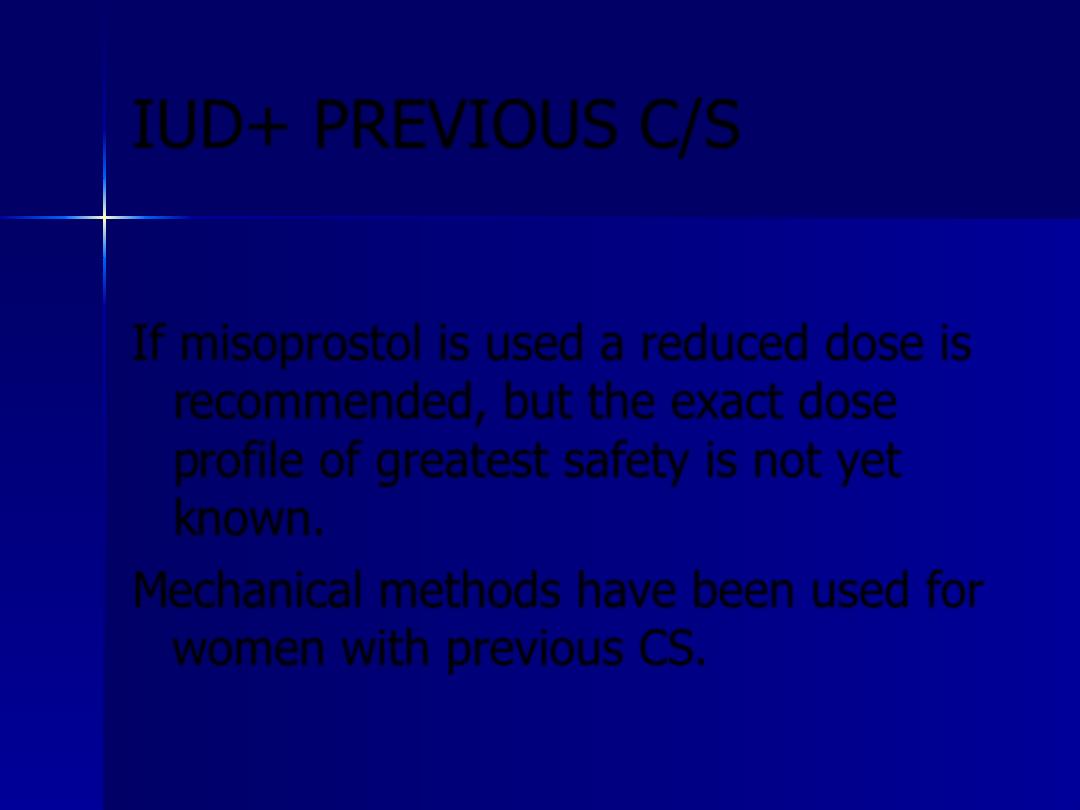
IUD+ PREVIOUS C/S
If misoprostol is used a reduced dose is
recommended, but the exact dose
profile of greatest safety is not yet
known.
Mechanical methods have been used for
women with previous CS.
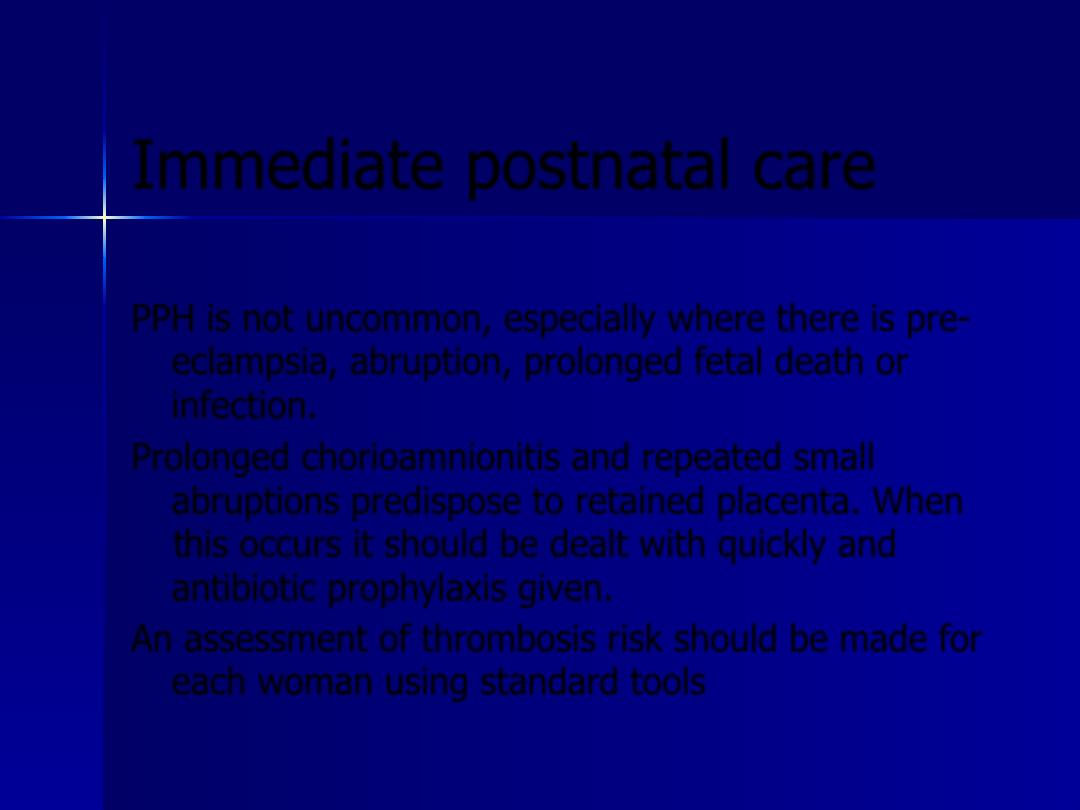
Immediate postnatal care
PPH is not uncommon, especially where there is pre-
eclampsia, abruption, prolonged fetal death or
infection.
Prolonged chorioamnionitis and repeated small
abruptions predispose to retained placenta. When
this occurs it should be dealt with quickly and
antibiotic prophylaxis given.
An assessment of thrombosis risk should be made for
each woman using standard tools
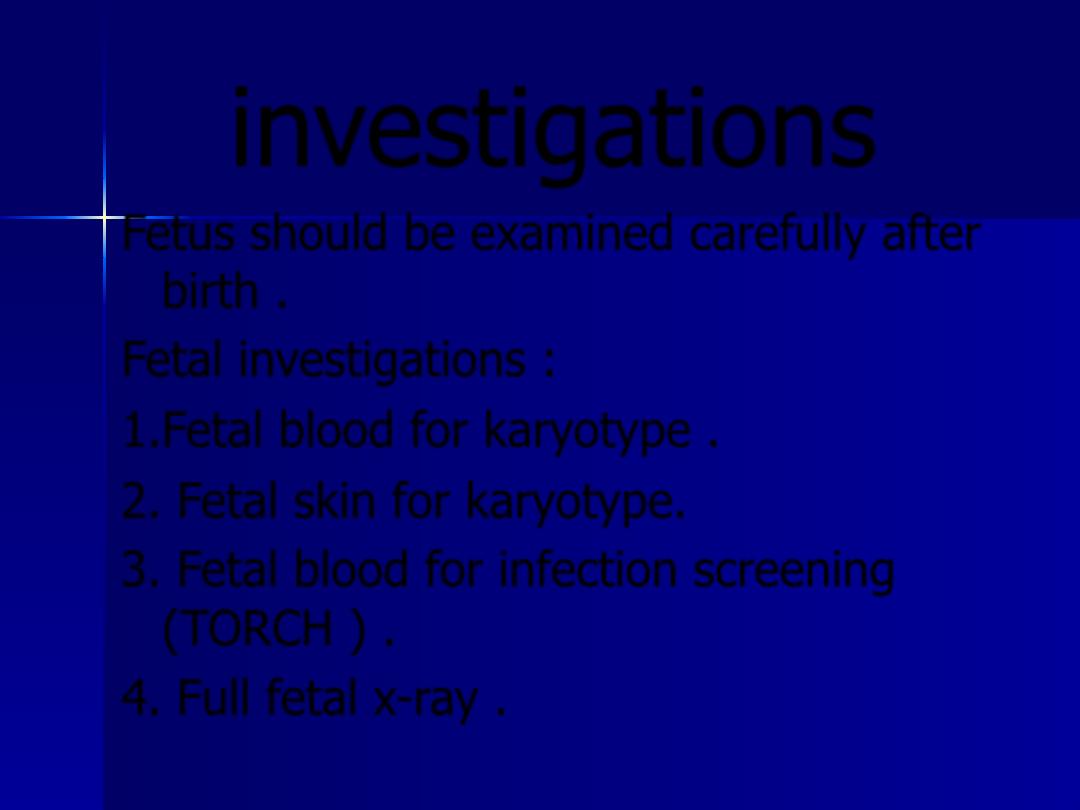
investigations
Fetus should be examined carefully after
birth .
Fetal investigations :
1.Fetal blood for karyotype .
2. Fetal skin for karyotype.
3. Fetal blood for infection screening
(TORCH ) .
4. Full fetal x-ray .
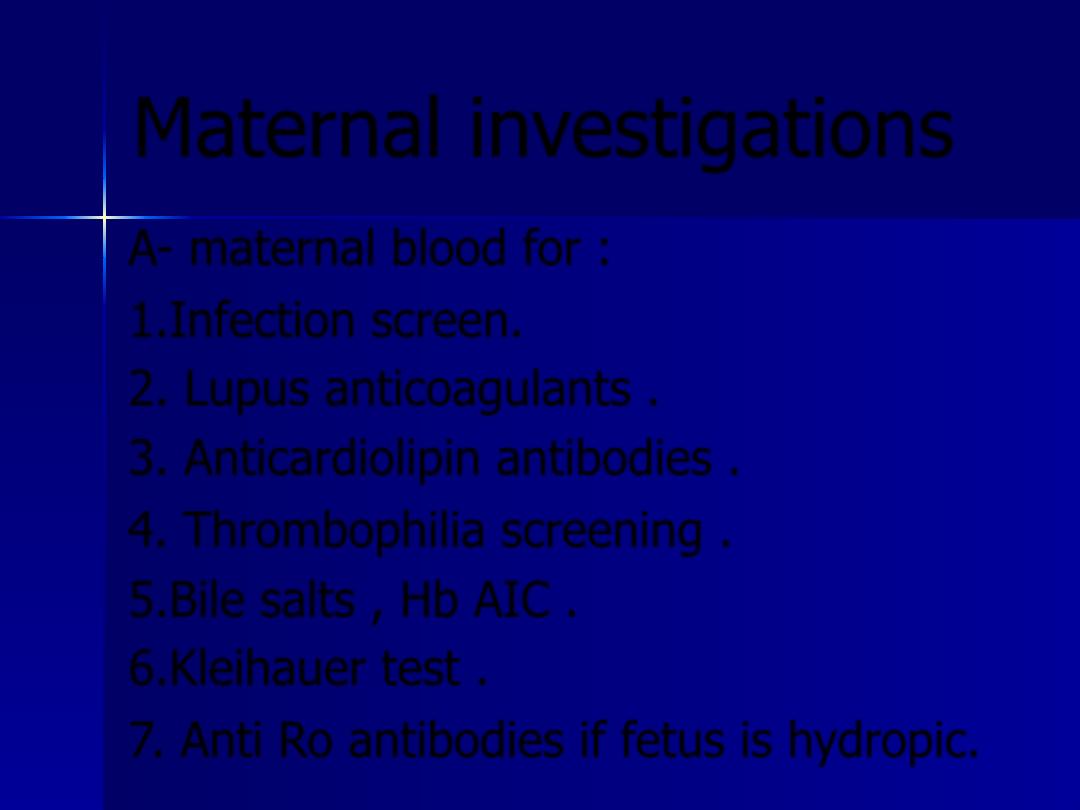
Maternal investigations
A- maternal blood for :
1.Infection screen.
2. Lupus anticoagulants .
3. Anticardiolipin antibodies .
4. Thrombophilia screening .
5.Bile salts , Hb AIC .
6.Kleihauer test .
7. Anti Ro antibodies if fetus is hydropic.
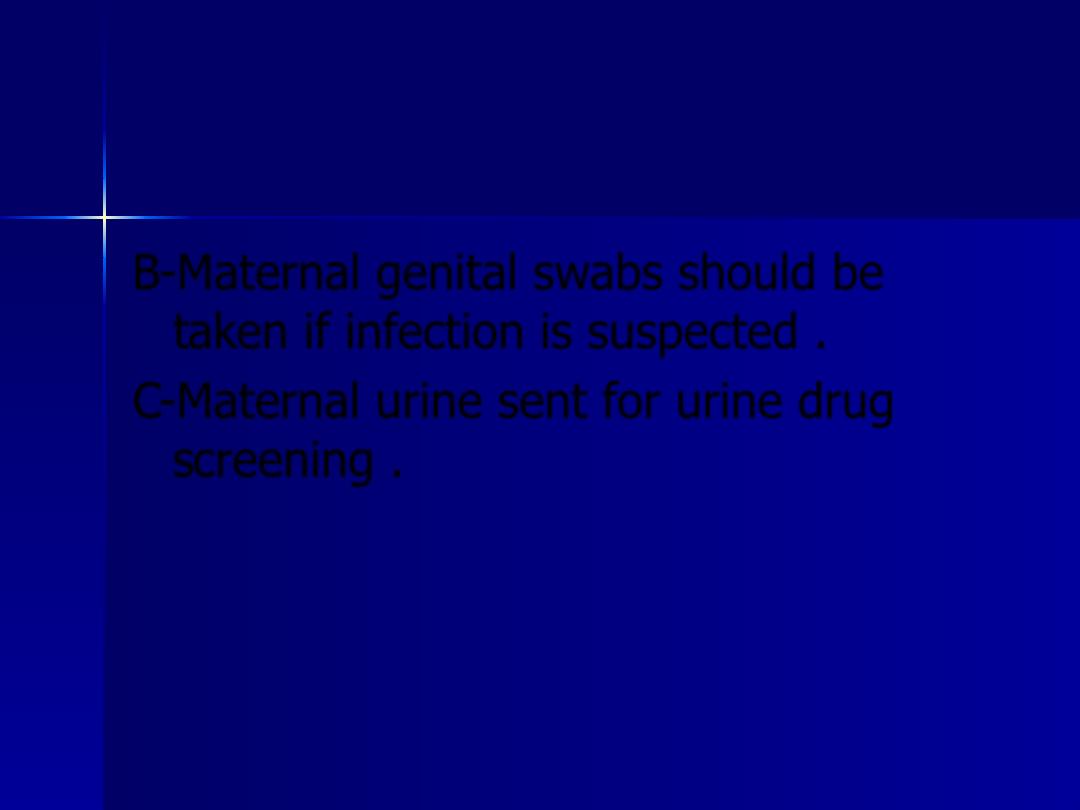
B-Maternal genital swabs should be
taken if infection is suspected .
C-Maternal urine sent for urine drug
screening .
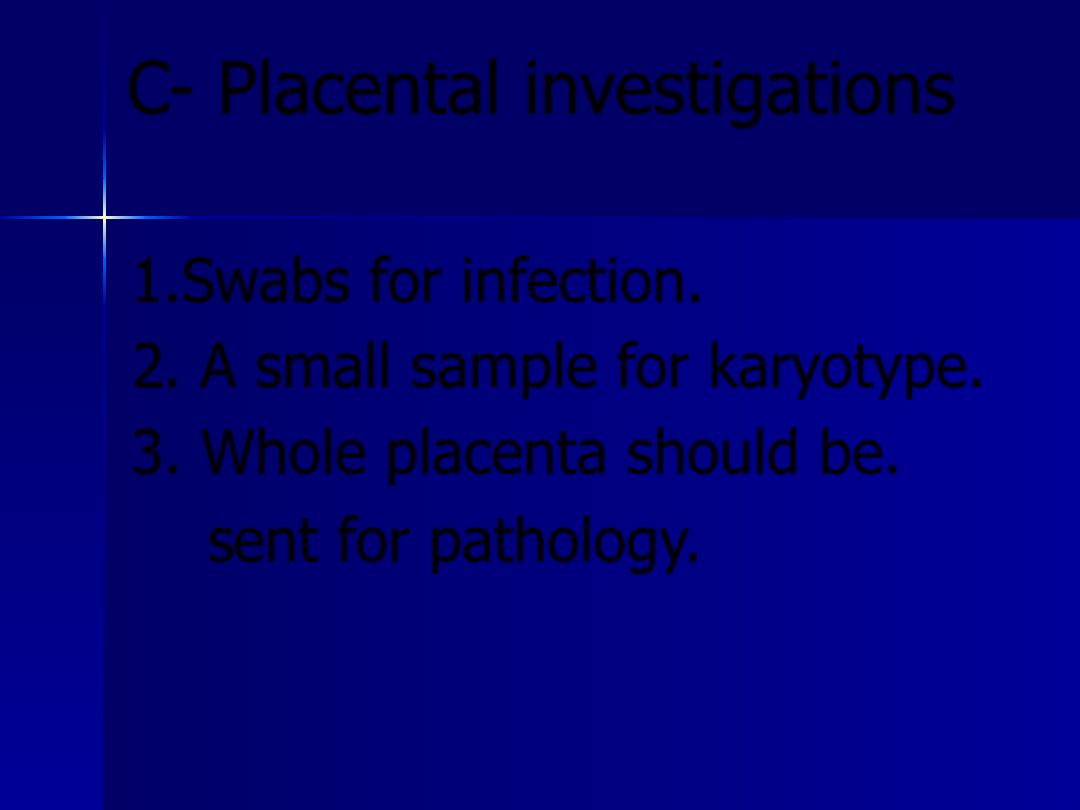
C- Placental investigations
1.Swabs for infection.
2. A small sample for karyotype.
3. Whole placenta should be.
sent for pathology.
